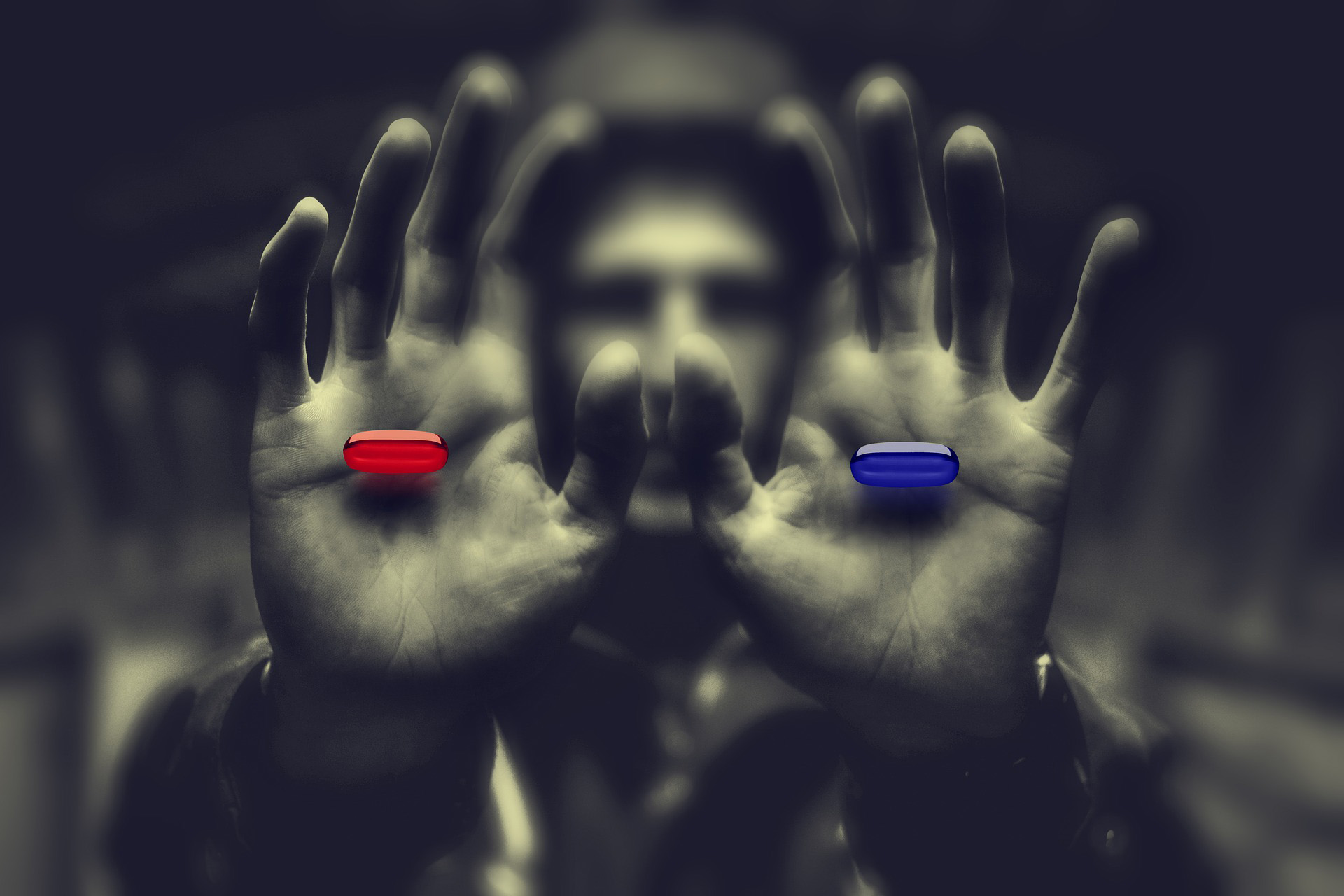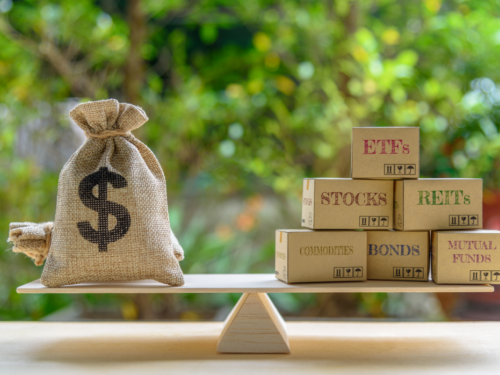
Summary:
* What happens if the market steps out of Plato’s Cave?[i]
* Equity valuations are still expensive and equity duration remains historically high.
April 2022 Returns:
In the 1999 movie The Matrix, Morpheus offers the protagonist Neo the choice between a red pill or blue pill. Morpheus says, “You take the blue pill…the story ends, you wake up in your bed and believe whatever you want to believe. You take the red pill…you stay in Wonderland, and I show you how deep the rabbit hole goes.”[x] Neo is offered a choice between continuing to live his life in contented ignorance or learning an unsettling, life-changing truth.
This type of choice was explored thousands of years earlier by Plato in his Allegory of the Cave. In it, a conversation between Plato’s brother Glaucon and Socrates describes a group of people who have lived their entire life chained in a cave facing a blank wall. These people watch shadows projected on the wall and believe the shadows are the only things that are real. What happens when one is freed from the cave to face reality; how would they cope; would they choose to return to the cave? The story goes on to assume a freed prisoner goes back to the cave to free the others so they too could learn the truth about the real world. Socrates and Glaucon conclude the other prisoners would likely kill anyone who tried to free them; that they would not want to leave the security and comfort of the world they perceived to be real.[xi]
It feels like markets have been living in the same contented ignorance as the aforementioned people in the cave and ignoring valuations. The Buffet Ratio, which is the total market capitalization of U.S. stocks divided by the Gross Domestic Product of the economy, hit a dizzying 202% on December 30, 2021. This was far more than the 143% seen back in March 2000 at the peak of the dot-com boom. While the recent sell-off in the markets has brought the Buffet Ratio back down to 170% as of April 30, 2022, it remains above the dot-com peak.[xii]
After a decade, it appears that some market participants seem to have begun stepping out of the cave to see reality. As of April 30, 2022, the S&P was down -14.3% from its all-time high hit on January 4, 2022, and the NASDAQ 100 was down -23.3% from its peak set back on November 22, 2021.[xiii] A bear market is defined as a -20% correction from the high. Surely with the NASDAQ 100 trading in bear market territory the worst is behind us, right? Not necessarily. In August 2020, we reminded investors in A Reminiscence of a Bubble Past[xiv] how the S&P 500 lost 50% and the NASDAQ lost 78% from the March 2000 peak to the October 2002 low.[xv]
As we discussed last October in What if the Bubble Bursts?[xvi], the market can trade lower for longer. It took just under 13 years for the NASDAQ 100 to recoup its losses after the dot-com bubble burst. Many investors are likely not comfortable with a 13-year time horizon where they simply just climb back to even. In April 2021, we asked the questions, Do you have enough time? Why is this time different?[xvii] and discussed how the average duration for a balanced portfolio was up to 43 years, 2.5 times longer than the historical average. The average duration corresponds to the time that it would take for investors to recoup their investment if they only received dividends and interest and never sold. The S&P 500 is +4% higher as of April 30, 2022 than it was on March 31, 2021, when the average duration was calculated.[xviii]
We are not alone in thinking that the market has become highly speculative. At the Berkshire Hathaway annual meeting on April 30th, Warren Buffet said U.S. markets have become “almost totally a casino,” and “overwhelmingly large companies in America, they became poker chips and people were buying and selling like three-day calls, two-day calls.”[xix]
Of course, markets – and the investors who participate in them – always operate across a broad range of risk with wise investment at one end and the “gambling” described above by Mr. Buffet at the other. The term speculation describes where one is on that range. Buying stocks with a “margin of safety” to protect the investment’s value in adverse conditions, like Mr. Buffett does, is considered less speculative, while uninformed or knee-jerk investments, such as short-term call option buying, are more speculative. Gambling involves the deliberate creation of new risks for the sake of diversion. Today, many investors see “investing” as a form of entertainment.[xx]
Assessing where the market is and where our clients’ portfolios should be along the range discussed above is among our most important focuses at CIG. Of course, we avoid gambling and attempt to be at the less speculative and more prudent side. Given our holistic approach and utilizing active management, The Ride[xxi] can be smoother, and clients may sleep better at night during periods like we are experiencing now.
Charles McKay, the author of Extraordinary Popular Delusions and the Madness of Crowds (1841), highlights that “Men, it has been well said, think in herds; it will be seen that they go mad in herds, while they only recover their senses slowly, and one by one” in speculative manias.[xxii] Recently, Bank of America’s Michael Hartnett discussed his Capitulation Indicators checklist suggesting that while the recovery process has begun, we have a fair way to go. For every $100 coming into the market during this cycle, only $3 has gone out. In past bear markets the average was $50 going out. Additionally, only 0.2% of industry-wide assets invested have moved out of the market versus 3% to 6% during prior market lows.[xxiii]
For those who would opt for the blue pill, we would welcome the opportunity to learn about where you think the market is and how your portfolio is positioned to weather the process of market capitulation ahead. We saw many bear market rallies during the dot-com bust, to only see the market grind lower for two more years before finally hitting rock-bottom. As of April 30th of this year, the Growth Benchmark is down -12% YTD, something not seen since the Great Financial Crisis.[xxiv]


